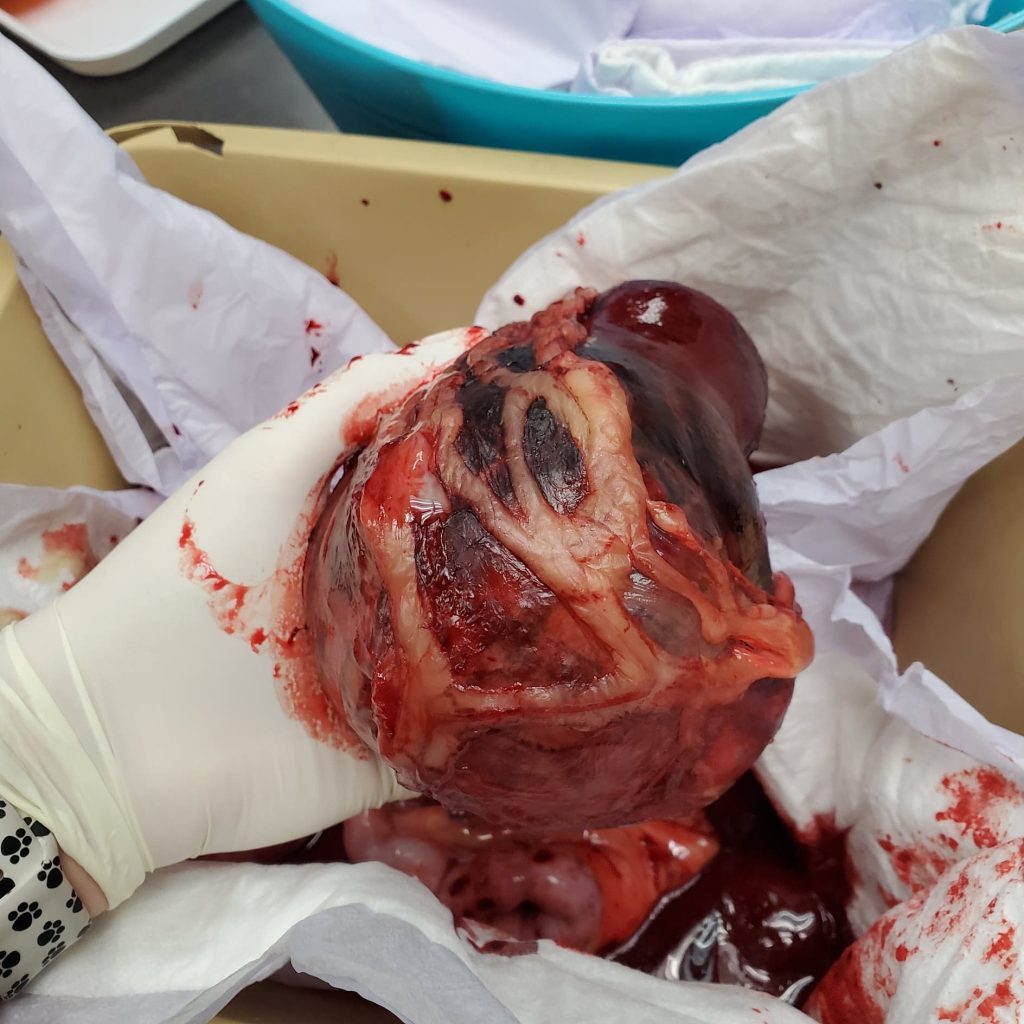
Breed Specific: The Pomeranian
March 25, 2022
Pet Medications – Why That Discount Isn’t Really a Discount
April 27, 2022There is much we still don’t know about the causes of pyometra, but it is a uterine infection and can be fatal if not caught and treated.
Meet Daisy Mae, a 12-year-old intact female Lab mix came to us in November due to lethargy and green discharge from her vulva. We believed pyometra to be the cause and recommended a spay. Read on to learn about pyometra and hear more about her incredible story and recovery!
Pyometra seems to be triggered by hormones after a heat cycle that cause the body to think there is a pregnancy when there is not. The uterus thickens and during this time, if bacteria is introduced, it creates hospitable conditions for the bacteria to thrive. According to the American College of Veterinary Surgeons (ACVS), “The bacteria typically cultured from the uterus are bacteria that would be found in the areas of the intestines and vagina (E. coli is the most common). Therefore, many of the infections are considered either from an ascending infection from the vagina, a concurrent urinary tract infection, or fecal contamination.”
While there are other symptoms, if you notice pus or bloody discharge from your female dog or cat who has not been spayed, it’s time for a vet visit as this condition can be fatal. Some pets who have an incomplete ovariohysterectomy may experience this infection, though it is rare. The most common other symptoms for pyometra are lethargy, depression, anorexia, excessive drinking and urination, and pale mucous membranes. The ACVS states: “Many dogs and cats will have a closed cervix and therefore the obvious sign of bloody vaginal discharge may not be present.”
Pikes Peak Vet sees these cases with some regularity. Pyometra is especially life threatening if it becomes closed vs open, meaning that the pus accumulates in the uterus, creating a large risk of the uterus rupturing. An open pyometra can close in an hour or a few days; there’s no way to know.
We scheduled Daisy Mae’s procedure for the next day. On the morning of surgery, her owners related that the discharge had stopped overnight, meaning her pyometra closed in only a few hours. Her belly had become swollen as well. Dr. Melanie spayed Daisy Mae, but also found a large mass on her spleen that had been bleeding. The owners were, of course, shocked, but wanted to save her, so Dr. Melanie removed Daisy Mae’s spleen with the mass. Thankfully the pathology came back showing that the mass was benign!

Daisy Mae is doing very well since her procedure and the owners were incredibly thankful. Daisy Mae in the orange harness is from her first visit and the other photo was taken at the time of her suture removal! Just to show the size, we’ve included a picture of her mass. We are all glad we could help Daisy Mae to get a new lease on life!






